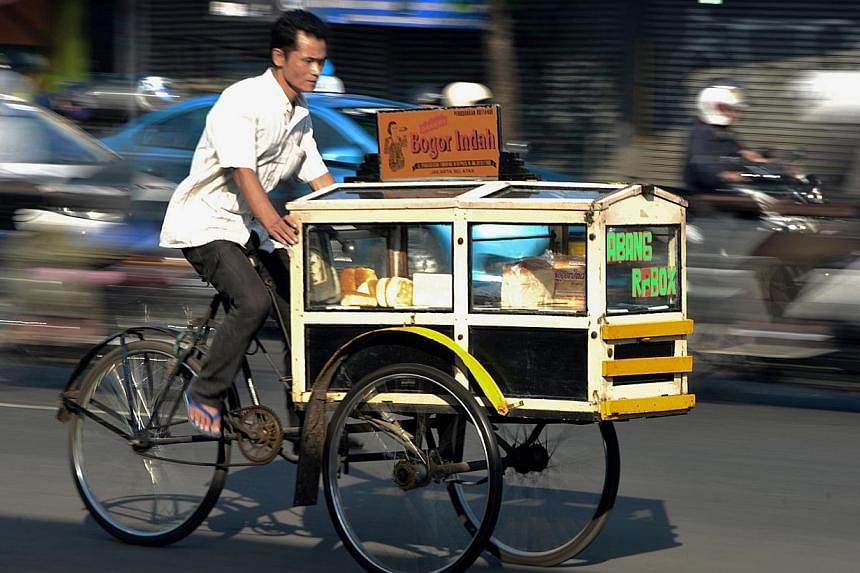The World Economic Forum's global competitiveness report last September set out the logic that shapes a globally competitive, flexible labour force.
The "efficiency and flexibility of the labour market", the report argues, "are critical for ensuring that workers are allocated to their most effective use". It continues: "Labour markets must therefore have the flexibility to shift workers from one economic activity to another rapidly and at low cost…"
This is the sort of exhortation heard so often that it no longer resonates. It has been embraced as "normal" in the context of an increasingly global economy. If countries wish to remain competitive they must be "agile" and "flexible". But what does it mean for those who are part of the "labour market"? What does it mean to live in a flexible labour market?
There are moments when policymakers and academics alight on something that the careful observer probably always realised was present - it just didn't have a label. And without a label it didn't have a presence in the minds of policymakers. Such was the case with the "discovery" of the informal sector by the International Labour Organisation (ILO) in 1972, in the wake of an employment mission to Kenya.
The informal sector comprises the shoe shiners, roadside newspaper sellers, stallholders, garbage pickers, bicycle menders, street hawkers, charcoal makers… all those women, men and children who fill the interstitial spaces that the formal economy does not. These activities are unregulated, family-owned, unskilled, labour- intensive - and use low or intermediate technologies. But they are also dynamic, efficient, adaptable, flexible and profitable.
In its 1972 report, the ILO assumed that as economies modernised, the informal sector would decline, wither and, in the end, largely die out. The formal sector would gradually encroach onto the terrain of the informal sector and there would be a progressive formalisation of the economy.
This, indeed, is what appeared to happen in South-east Asia between the 1980s and 1990s. In Thailand in 1980, the informal sector accounted for close to 80 per cent of total employment. By 2000, it had declined to under 60 per cent, and was expected to fall still further. Similar trends were evident in Malaysia, the Philippines and Indonesia.
To the surprise of many, however, since the turn of the millennium, most of the countries in South-east Asia have either seen a halt to the decline of informal employment or, in some cases, an actual expansion in its significance. In Thailand in 2010, informal employment accounted for 63 per cent of total employment. In Indonesia, the proportion was 66 per cent; in the Philippines, it was around 75 per cent; and in Vietnam, some 85 per cent.
There are, to be sure, real difficulties of definition and comparison across the region. Nonetheless, there is in the data a puzzle. The economies of South-east Asia are becoming more modern. But employment data indicates they are also becoming more informal. What is going on?
It is in the exhortation of the World Economic Forum to build "flexible" labour markets that an answer begins to emerge.
There is no need to look to the garbage pickers on the streets of Hanoi or roadside newspaper boys in Jakarta. Consider instead factory employees, construction workers, taxi drivers, security guards. What is happening across Asia - and beyond - is an expansion of the informal economy even while the informal sector has declined.
Formal sector work has become increasingly casual, flexible, outsourced, unregulated, non-unionised and contract-based. It has, in short, become informalised. This has led to debates about the growing precariousness of work in the modernising economies of South-east Asia.
The economies are thus becoming both more formal and more informal: In Indonesia and Thailand, the decline of the informal sector has been counterbalanced by the growth of the informal economy; in Vietnam, the command economy's decline has been accompanied by an expanding informal-formal economy.
A 2009 survey revealed that about seven out of 10 workers in Vietnam's formal economy were on part-time or temporary contracts. In the Philippines, around one-quarter of workers in firms with 20 or more employees were hired on a "non-regular" basis.
The pattern, then, seems clear. An even more important question, however, is: Why do we see this process of informalisation?
Many scholars view it as a defining feature of advanced capitalism. The pressures of global competition have forced companies to maintain their competitiveness by becoming more agile. This has had real implications for workers in terms of security of employment, fringe benefits, conditions at work and, in some cases, health and safety in the workplace.
When the floods in 2011 led to the closure of scores of factories in Thailand, it was evident that the migrant workers "released" from employment were often on casual contracts. Many retreated to their home villages with little or no severance pay and with little to show for years of toil.
The "paradox" of East Asian development, as academic Dae-oup Chang puts it, is that the emergence of Asia as the home of the Global Factory has occurred in the absence of the emergence of a traditional working class. Most South-east Asians are wealthier in material terms. Whether they are more secure is not so certain.
The writer is a professor at the National University of Singapore's geography department.

